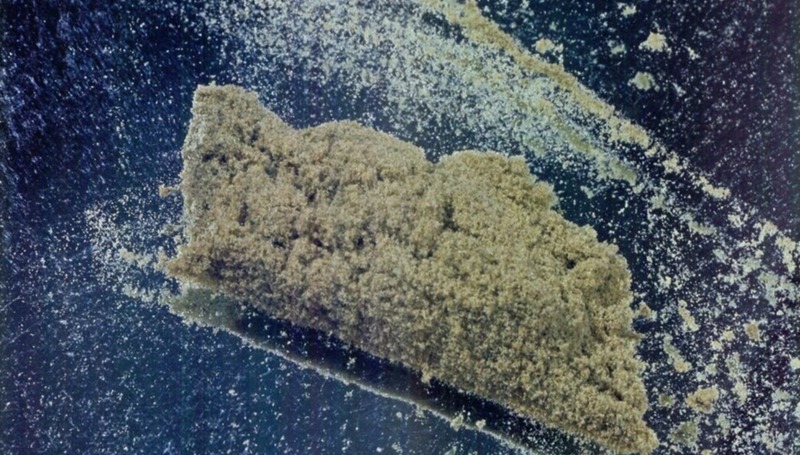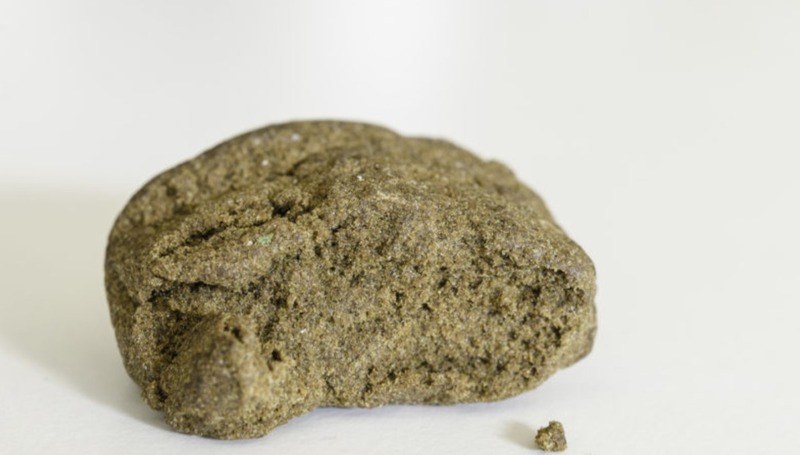What is Hashish and How Is It Made?
Hashish is made from the “kief,” or dried resin, of mature and unpollinated female cannabis plants. Trichomes are tiny glandular structures that exude a sticky resinous substance known as “hash.” Hash is collected by hand, through mechanical beating of the plants, or via submersion in ice water followed by removal of the trichomes with small sieves to be dried. The majority of kief is generally pressed into “cakes,” or blocks, which are then smoked in pipes, vaporized and inhaled, or combined with marijuana in joints.

Hash can be soft and flexible or hard and brittle. It can be red, black, brown, green, yellow, or blonde in color. Hash may also be used to make things like brownies because it dissolves in oils, butter, or cream and may therefore be extracted into hash oil, a gooey substance that people are “dabbing” and smoking with e-cigarettes.
What Are The Health Effects of Hashish Use?
Short-term hashish use can lead to memory and learning difficulties, altered perception (sight and sound), problems with thinking and problem solving, coordination issues, and a faster heart rate, anxiety, and panic attacks. The effects may be more severe because of the high THC concentration in hash and other concentrates.
Because THC is readily absorbed by fatty tissues in various organs, it has a long half-life. THC may be discovered in urine samples up to several days after smoking cannabis, depending on the quantity smoked and the sensitivity of the testing equipment. In heavy chronic users, traces of THC can sometimes be detected weeks after they have stopped using marijuana or its concentrates.
THC concentration in hashish is several times greater than the levels of THC found in ordinary marijuana. The amount of THC in marijuana has increased dramatically over the last two decades. According to tests conducted by the DEA, cannabis’ THC content has risen from about 4% in 1998 to over 15.5% today.
The long term effects of hashish or marijuana concentrate use are not yet fully known; but, long-term marijuana plant-use has been studied.
- Psychological effects can include paranoia, anxiety, panic attacks, and hallucinations.
- Alterations in heart rate and blood pressure may occur.
- People who smoke cannabis frequently have the same respiratory issues as cigarette smokers. These individuals might have recurrent cough and phlegm, chronic bronchitis symptoms, and more frequent chest colds. They are more likely to get lung infections such as pneumonia than nonsmokers. Marijuana smoke contains some of the same cancer-causing compounds as cigarette smoke (toxins and tar).
- Marijuana and THC affects memory, judgment and perception. Learning and attention skills are impaired among people who use marijuana heavily.
Addictive Potential
A drug is addicting if it causes compulsive, uncontrollable drug craving, seeking, and use, even in the face of negative health and social consequences. When a user begins to seek out and consume the substance compulsively, he or she is said to be dependent or addicted to the drug.
A tolerance to marijuana develops for frequent, heavy users (THC). Tolerance implies that the user requires greater amounts of the drug to achieve the same end as before.
Long-term marijuana users may also experience withdrawal and addiction problems. Mild withdrawal symptoms that have been reported in those trying to quit include:
- irritability
- trouble sleeping
- decreased appetite
- anxiety
- cravings
There are no medications to treat marijuana use disorder, but behavioral therapy may help. If you’re looking for treatment for marijuana use disorder, speak with your doctor.
How Does Hash Affect the Body?
Although all types of cannabis produce a high, hash is a more potent form of marijuana because it has a higher concentration of THC. THC is the chemical component in cannabis that causes most of its psychological effects.
The THC content of marijuana is measured in percentages, with the most potent strains containing 40 to 60 percent or more. One particularly powerful type of hash has a 90 percent THC concentration.
A solventless concentrate extracted using ice water, produced from millions of trichome glands and terpenes known as bubble hash, is less powerful yet still contains plenty of trichomes.
What’s the Difference Between Hash and Other Cannabis Concentrates?
Cannabis herb has been used as a medicine in Asia for thousands of years, whereas most other cannabis extracts have just been around for the past few decades, with improvements in extraction technology.
Hash is simple to produce, and there are many methods to do so. It can be made in people’s homes safely and with minor materials, making it accessible to anybody. Most other concentrates, with the exception of rosin, need unique equipment and must be completed by licensed experts.
Don’t try to make solvent cannabis extracts on your own, and always make sure you’re buying from a legal dealer who checks the contents of products to verify that you’re receiving a substance free of pollutants or other hazardous chemicals.
